
Embark on a delightful journey through the world of Portuguese wine, where every sip tells a story of tradition, flavor, and adventure.
From the lush vineyards of the Douro Valley to the coastal breezes of Vinho Verdes, Portugal’s diverse wine regions offer a treasure trove of unique varietals waiting to be discovered.
In this guide, we will uncork the secrets of Portuguese red and white wine, exploring the full-bodied richness of this historical region and inviting you to savor every drop of this vinous voyage.
Portuguese Wine: A Hidden Gem
Portuguese wine is often overshadowed by its European neighbors, yet it holds an array of exquisite flavors that are both unique and captivating.
With a winemaking history that spans thousands of years, Portugal offers an impressive diversity of wines, marked by the distinct characteristics of its varied landscapes.
From the bold and full-bodied reds of the Douro Valley to the light and crisp whites of Vinho Verdes, there’s a Portuguese wine to suit every palate.
Despite its rich heritage, Portuguese wine remains something of a hidden gem, one that promises a rewarding discovery for those who venture off the beaten path.
Each bottle is a reflection of Portugal’s rugged terrain, coastal influence, and the dedication of its winemakers. As you explore the enchanting world of Portuguese wine, you’ll uncover wines that are not only deeply satisfying but also tell the story of a country’s passion and pride.
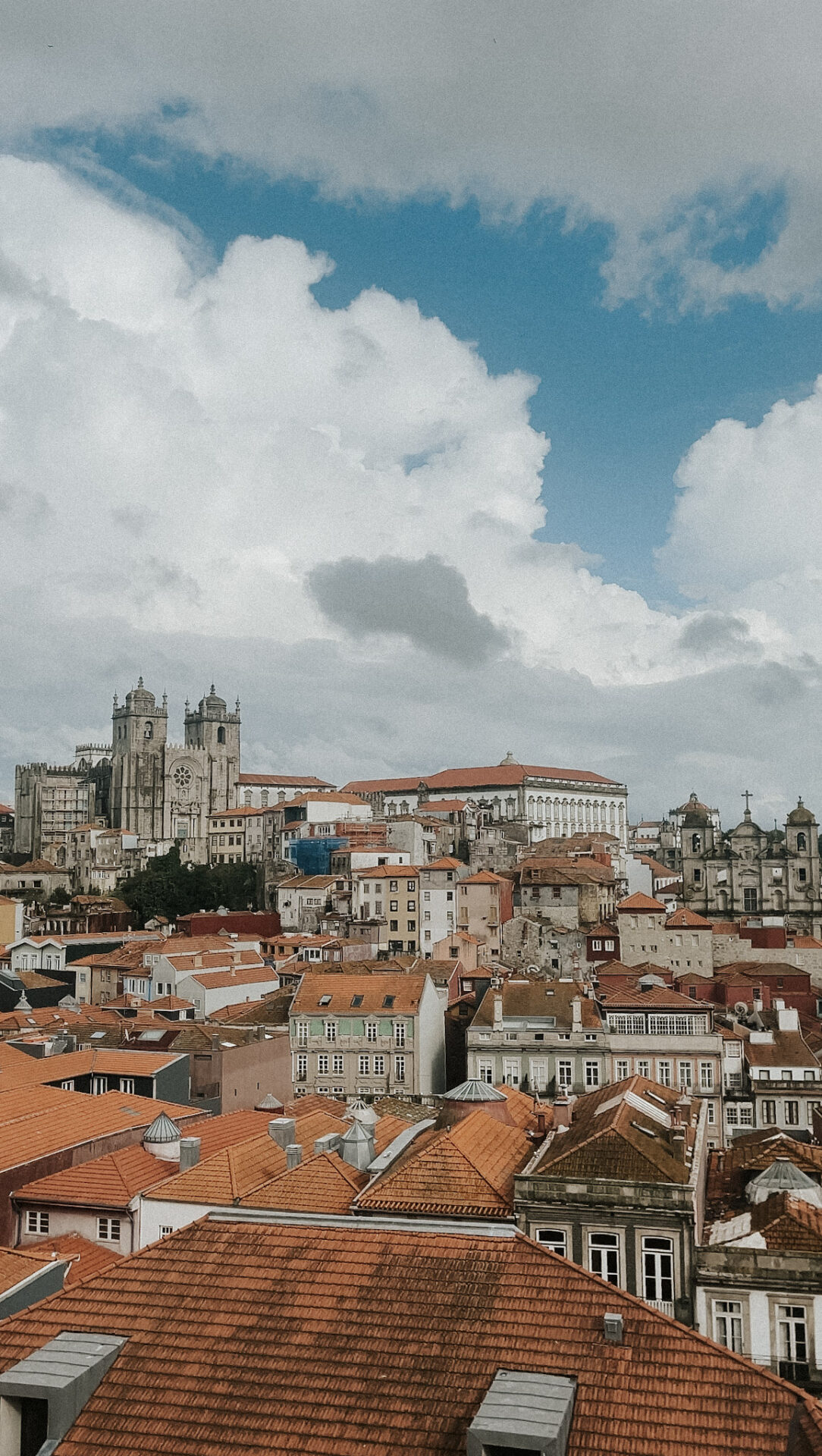
Portuguese Indigenous Grapes
Portugal boasts a treasure trove of indigenous grape varieties, distinct from the international Cabernet Sauvignon or Chardonnay. In fact, with over 250 native grapes, Portugal holds the crown for the most indigenous varieties in the world!
These unique grapes have thrived for centuries, adapting to Portugal’s diverse landscape – from the cool, maritime north to the scorching heat of the Alentejo.
This rich tapestry of grapes results in a kaleidoscope of flavors. Alvarinho, for example, flourishes in the Vinho Verde region, producing elegant white wines bursting with citrus and floral notes.
In contrast, the powerful Touriga Nacional grape reigns supreme in the Douro Valley, forming the backbone of world-class Ports and bold red table wines.
This is just the tip of the iceberg – Portugal offers a thrilling adventure for wine lovers with varieties like the crisp Encruzado from Dão, the rustic Sousão of the Douro, or the perfumed Trincadeira of the Alentejo.
Each grape tells a story of Portugal’s unique terroir, waiting to be discovered in every sip.
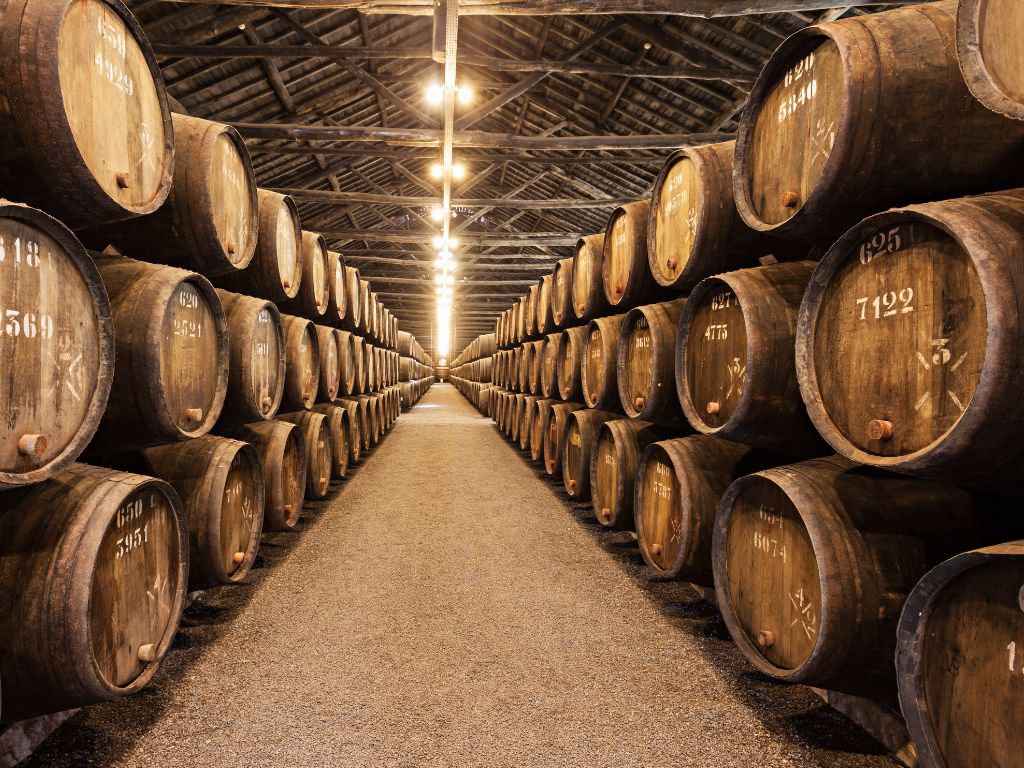
Portuguese Wine Regions to Know
Portugal’s wine regions are as diverse as they are historic, with each area offering a distinct taste experience shaped by the local climate, soil, and winemaking traditions.
The Douro Valley, famous for its terraced vineyards that gracefully follow the meandering Douro River, is the birthplace of Port wine and produces some of the country’s most celebrated Portuguese red wines.
Further north, Vinho Verdes provides a refreshing contrast with its vibrant, acidic white wines that capture the essence of Portugal’s cool, green coastline.
Meanwhile, the Dão region, nestled in the heart of the country, is renowned for its elegant, full-bodied reds that rival the finesse of the finest global vintages.
Each region contributes to the tapestry that is Portuguese wine, offering explorers a chance to experience a wide array of flavors and styles. Whether you prefer the robust reds or the zesty whites, Portugal’s wine regions deliver quality and variety in equal measure.
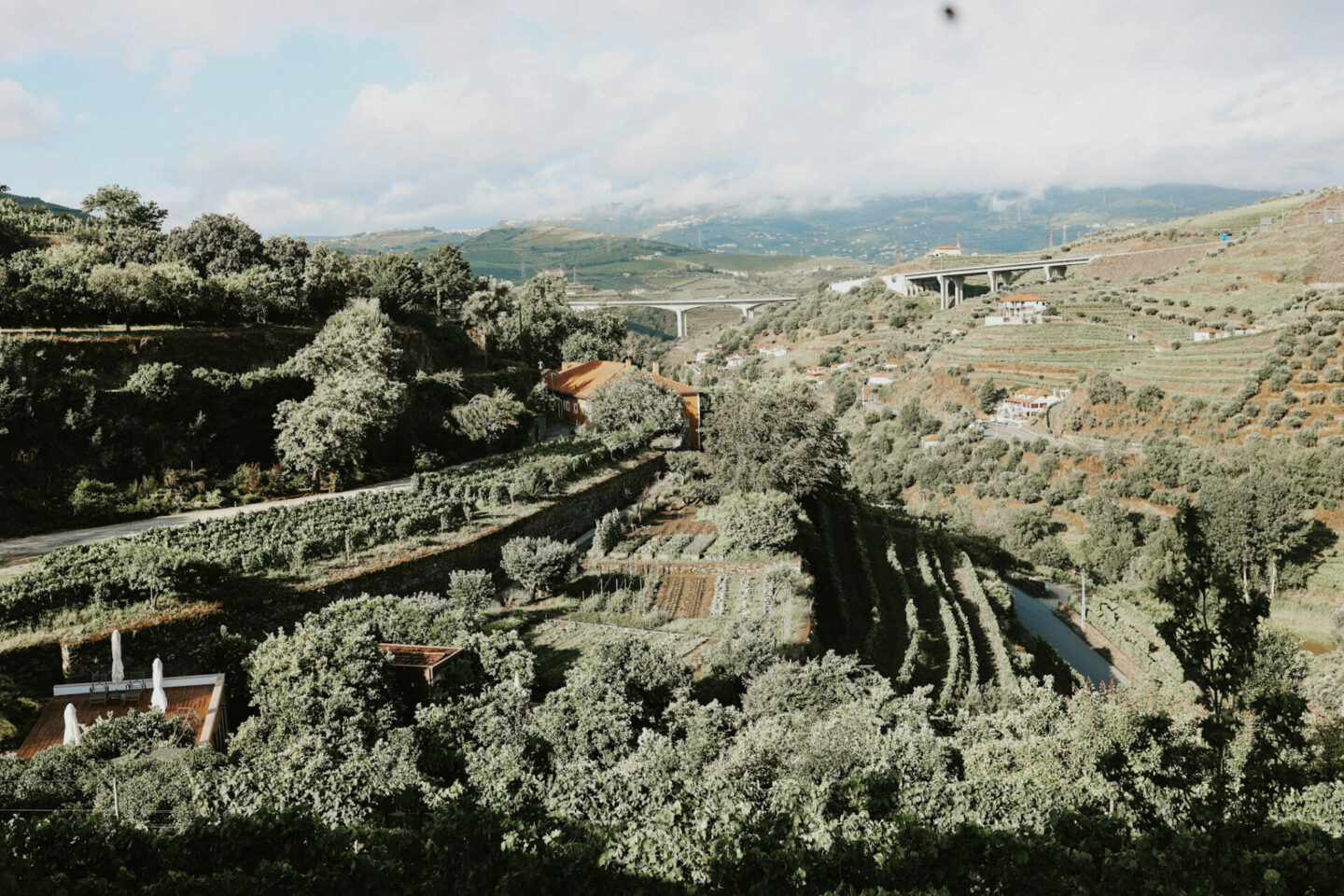
Portuguese Red Wine
Touriga Nacional: The Quintessential Portuguese Grape
Portuguese red wine is an emblem of the nation’s viticultural expertise, often celebrated for its potent intensity and layered flavors.
Among the reds, the stand-out is certainly Touriga Nacional, Portugal’s premier grape. It brings a density of flavor to the wines, unparalleled in their capacity to age gracefully and reveal the intricate craftsmanship behind their creation.
Touriga Nacional underpins the profile of many fine Portuguese reds, offering a lush tapestry of aromas and the robust structure necessary for exquisite, premium wines.
Tinta Roriz: The Versatile Performer
A discussion of Portugal’s red wines would be incomplete without Tinta Roriz, widely known as Tempranillo across the Iberian Peninsula.
This versatile grape is a foundational element in the blend of many of Portugal’s celebrated reds, infusing them with durability and complexity.
In the terraced vineyards of the Douro Valley, Tinta Roriz thrives on the mineral-rich schist soils, imparting an elegant firmness to the wines that speak of the region’s geological richness.
Alentejo Red Varietals: The Fruit-Forward Flavors
The full-bodied and intricate reds of Portugal present a spectrum from the Alentejo region’s fruit-forward bottles, brimming with plush, sun-ripened notes, to the age-worthy structures born from the Douro Valley’s schistous terrains, lending a distinctive mineral sharpness to the wines.
For connoisseurs and enthusiasts alike, the experience of savoring a glass of Portuguese red wine is akin to embarking on a voyage through the country’s opulent landscapes and storied past. It creates a perfect equilibrium of time-honored and contemporary winemaking methods—a harmonious toast to Portugal’s rich enological heritage.
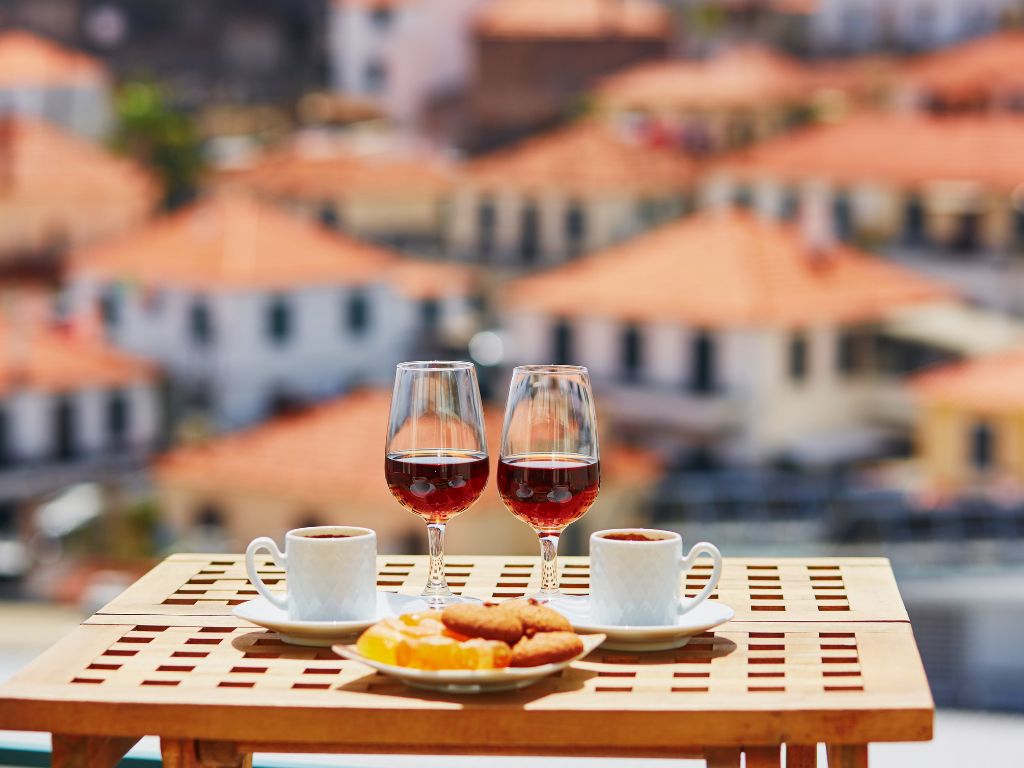
Portuguese White Wine
Alvarinho: The Aromatic Virtuoso
Portuguese white wines, while sometimes eclipsed by the fame of their red companions, stand proud with their own applause-worthy array of tastes. From sharp and mineral edginess to opulent fruitiness, there awaits a spectrum of flavors.
Alvarinho is one such varietal, celebrated for its fragrant aromatic profile, ranging from zesty citrus to delicate floral nuances.
Originating from the cool, verdant terrains of Vinho Verdes, Alvarinho wines possess a refined effervescence and piercing acidity, perfect for pairing with seafood or sipping on a sun-drenched afternoon.
Loureiro: The Floral Whisperer
Just as enchanting, the Loureiro grape is another of Portugal’s white wine gems, less known in the global arena yet winning hearts with its unique charm.
Loureiro graces the palate with whispers of blooming bouquets and hints of zesty citrus, endowing Portuguese white wines with irresistible freshness and layered complexity. This indigenous variety encapsulates the seafaring breeze and Portugal’s winemaking creativity, offering a taste that is as invigorating as it is intricate.
Related: Try Loureiro yourself! Shop Lourero from Sapateiro (10% off 175€+ with code “paige”)
With each tasting, Portuguese white wines invite an exploration into Portugal’s rich viticultural landscape, an experience of both heritage and innovation.
Savored solo or in concert with culinary delights, they stand as a vast and exciting world waiting to be explored, one glass at a time.
Fortified Wine
Portugal’s contribution to the world of fortified wine is unparalleled, with Port wine being its most famous export.
This luscious, sweet wine hails from the Douro Valley and is traditionally enjoyed as a dessert wine or a sophisticated sipper. The fortification process, which involves adding grape spirit to halt fermentation, preserves the wine’s natural sugars and boosts its alcohol content. This results in a rich, intensely flavorful wine with a long shelf life and an even longer history.
Port wine comes in various styles, including ruby, tawny, and vintage, each offering a unique tasting experience.
Ruby Port is deep and fruity, while tawny Port is smoother, with notes of caramel and nuts due to longer aging in barrels. Vintage Port, made from the best grapes in exceptional years, is a collector’s treasure, capable of aging for decades.
Exploring the world of Portuguese fortified wine is a journey through texture, taste, and time-honored tradition. It’s an adventure that promises to enhance one’s appreciation for Portugal’s viticultural artistry.
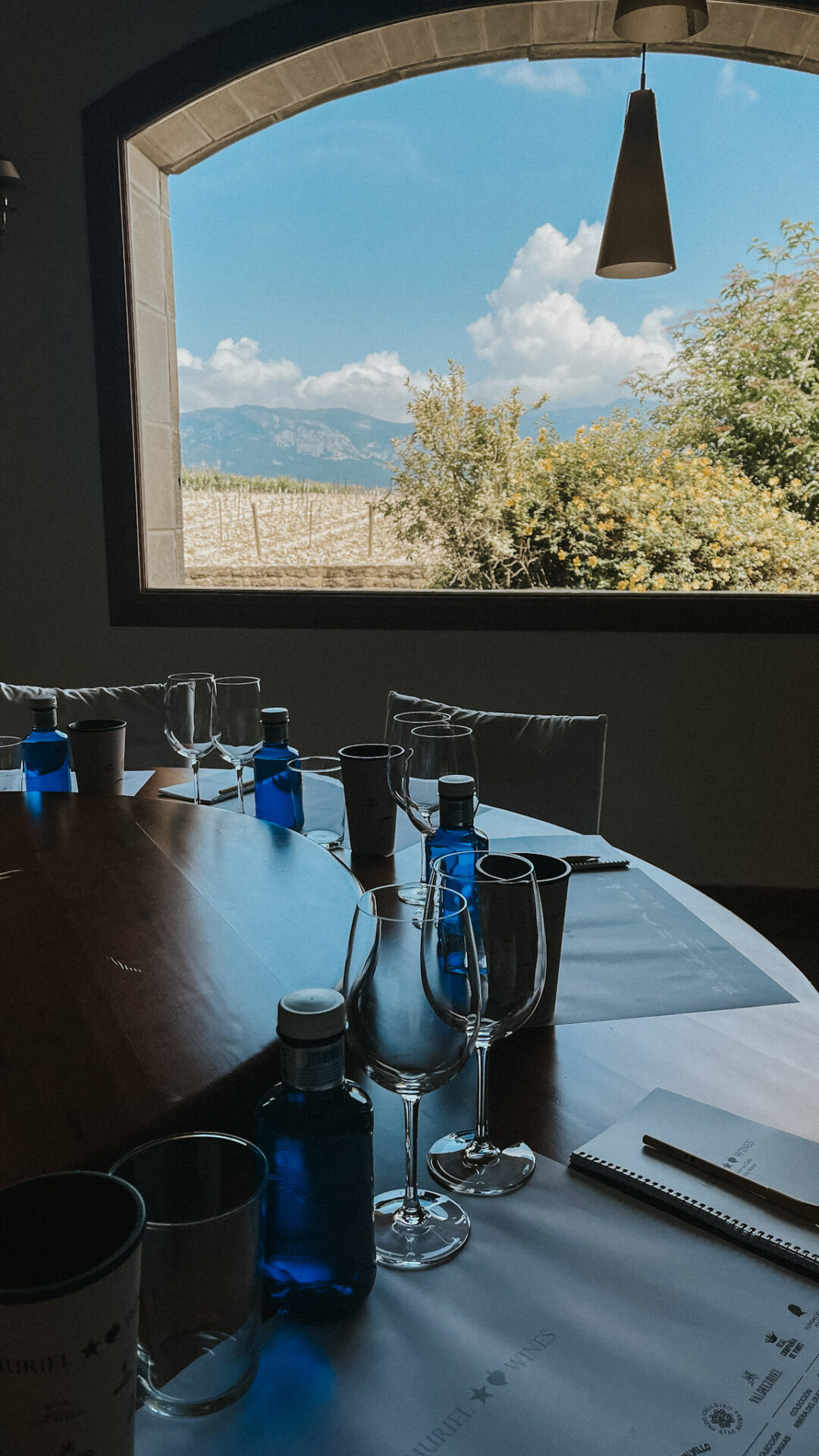
Portuguese Food & Wine Pairings
Pairing Portuguese wine with local cuisine is an art that enhances the gastronomic experience, creating a harmony of flavors that is truly unforgettable. The diverse range of Portuguese wines means there’s a perfect match for every dish.
For instance, the crisp acidity of Vinho Verde is a natural fit for the fresh seafood dishes that dot Portugal’s coastline, while the full-bodied reds of the Douro Valley stand up to the robust flavors of traditional meat dishes, like the rich, smoky cozido à portuguesa.
When it comes to cheese, the creamy texture of Portugal’s queijo da serra finds its soulmate in the fruity complexity of a Dão red. And for dessert, the sweetness of a Portuguese custard tart, pastel de nata, is elevated by the velvety richness of a tawny Port.
Exploring Portuguese food and wine pairings is not just about taste—it’s an exploration of culture and tradition, with every bite and sip telling a story of the land and its people.
Conclusion
As we reach the end of our vinous voyage through Portugal, it’s clear that the wines from this storied land offer a rich tapestry of flavors, history, and culture.
Portuguese wines, from the robust reds to the elegant whites and the sumptuous fortifieds, are as diverse as they are delightful. They are a testament to the dedication of the winemakers who craft them and the unique terroir that shapes them.
The journey doesn’t end here; it begins with every bottle you uncork and every pairing you savor.
Whether you’re a seasoned wine enthusiast or a curious newcomer, Portuguese wines invite you to continue exploring, tasting, and learning. They are an open invitation to discover the hidden gems and cherished traditions of Portugal’s wine country.
So, raise a glass to the spirit of discovery and let Portuguese wine be your guide to new experiences and timeless pleasures.
